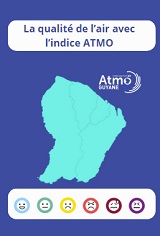Blada.com
vendredi 11 juillet
Boîtes aux lettres
Courrier des lecteurs
Petites annonces
Emploi / Formation
Covoiturage
Infos citoyennes
Infos citoyennes
26/01/22
La révision du projet régional de santé, jalon essentiel sur la route du CHRU
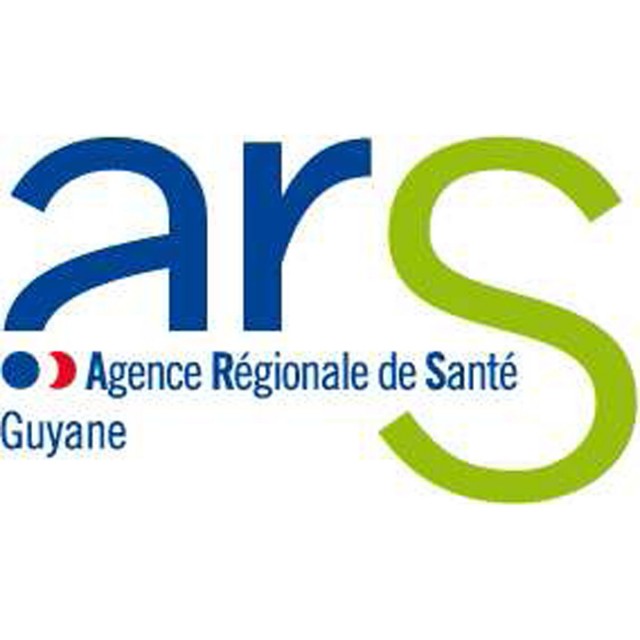 Le comité de pilotage du futur centre hospitalier universitaire de Guyane s’est réuni, en ligne, hier après-midi. Ses membres ont approuvé leur charte de fonctionnement, ont étudié les différents financements du CHRU (fonds européens, Ségur de la santé…), ont discuté des gains à obtenir en matière de transport sanitaire, en particulier avec la liaison aérienne Cayenne – Saint-Laurent du Maroni. Le point principal de la réunion a concerné l’élargissement des activités de soins à autoriser.
Le comité de pilotage du futur centre hospitalier universitaire de Guyane s’est réuni, en ligne, hier après-midi. Ses membres ont approuvé leur charte de fonctionnement, ont étudié les différents financements du CHRU (fonds européens, Ségur de la santé…), ont discuté des gains à obtenir en matière de transport sanitaire, en particulier avec la liaison aérienne Cayenne – Saint-Laurent du Maroni. Le point principal de la réunion a concerné l’élargissement des activités de soins à autoriser.
L’actuel Projet Régional de Santé (PRS) date de 2018 et vaut pour dix ans. Il a donc été élaboré à une époque où la création d’un CHU de Guyane n’était qu’un objectif à long terme. La décision des ministres de la Santé, de l’Enseignement supérieur et de la Recherche et des Outre-mer en mars dernier, a vigoureusement rapproché le terme : le CHRU de Guyane doit voir le jour dans trois ans. La révision du PRS a été engagée immédiatement, avec les professionnels de santé du territoire, et le nouveau PRS est actuellement en cours de concertation auprès de la CRSA et de l’Assemblée territoriale de Guyane.
Hier, les principales évolutions du PRS ont été présentées aux membres du comité de pilotage du CHRU. « La liste des activités de soins autorisées en Guyane était trop étroite pour permettre la création du CHU, a expliqué Clara de Bort, directrice générale de l’ARS. Il convient de le mettre à jour pour permettre aux hôpitaux de créer les nouvelles activités nécessaires. »
Un des projets significatifs concerne les centres délocalisés de prévention et de soins (CDPS) de Maripasoula, Saint-Georges et Grand-Santi. Pour devenir de véritables hôpitaux de proximité, ces structures ont besoin d’une autorisation d’activité de médecine, et d’une antenne du service des urgences. Ces développements sont désormais prévus dans le nouveau PRS. De nombreux autres progrès sont programmés pour les patients des communes de l’intérieur : développement des consultations avancées, création d’une offre de radiologie conventionnelle sur place, développement de la biologie délocalisée, optimisation du transport sanitaire, etc.
Un autre élément important de ce nouveau PRS consiste à équilibrer les développements de l’offre de soins sur le territoire : ne pas seulement développer l’offre du centre littoral mais bien renforcer l’Ouest. Pour cela, le territoire a été divisé en deux zones : le bassin de Cayenne d’un côté, le reste de la Guyane de l’autre. Les nouvelles activités à créer sont ainsi distribuées sur ces deux grandes zones. Ainsi par exemple, le nouveau PRS pose le principe d’accorder 2 nouvelles autorisations de chirurgie partielle et complète sur la zone « hors Cayenne ». Seuls les projets situés hors du bassin de Cayenne pourront ainsi solliciter ces nouvelles autorisations.
Cette révision du PRS vise aussi, par exemple, à :
- Faciliter l’accès à la greffe rénale sur le territoire ;
- Développer la dialyse péritonéale ;
- Permettre aux établissements du GHT d’assurer des activités de réanimation pédiatrique ;
- Développer les surspécialités pédiatriques ;
- Mettre en place une plateforme territoriale d’appui aux cas complexes de cardiologie ;
- Améliorer l’offre de soins autour de la cardiopathie infantile ;
- Développer une offre de soins pour la prise en charge de la drépanocytose via caisson hyperbare ;
- Former les équipes à la prise en charge des grands brûlés ;
- Prioriser la chirurgie cardiaque et neurologique ;
- Développer le service de chirurgie bariatrique ;
- Conserver les capacités de soins critiques mises en place depuis le début de la crise sanitaire ;
- Développer l’imagerie interventionnelle 24h/24 ;
- Renforcer l’offre ambulatoire en psychiatrie ;
- Structurer l’offre chirurgicale pour les cancers ;
- Développer la pratique du bilan gériatrique en lien avec la ville.
Ce n’est qu’un échantillon de ce que prévoit la révision du PRS, dont vous pouvez prendre connaissance ici.
Le PRS soumis à consultation
CHRU Guyane 2025 - Vidéo de présentation
Internat : l’offre de stages se renforce
26 internes ont demandé à effectuer leur inter-CHU en Guyane au prochain semestre, qui débute en mai. C’est la fourchette haute des demandes puisqu’ils n’étaient que 18 en novembre 2020 et 25 en novembre 2021. Cela confirme l’attractivité du territoire qui accueille actuellement un nombre record d’internes Antilles-Guyane (69). Or, le développement de la formation en santé est un pan majeur du futur CHRU.
Le 13 janvier, la commission d’agrément a validé l’accueil d’internes en ophtalmologie (Antilles-Guyane ou inter-CHU) par le Dr Max Gérard, installé à Cayenne. Enfin, la formation de maîtres de stage universitaires se tiendra pour la première fois en Guyane, la semaine du 30 mai. Jusqu’à présent, elle était dispensée en Guadeloupe, ce qui était une contrainte pour les praticiens guyanais. Cette formation, assurée par le Collège national des généralistes enseignants (CNGE),est obligatoire pour accueillir des étudiants en stage de médecine générale ambulatoire. En Guyane, l’ARS a identifié au moins 23 généralistes qui souhaiteraient y participer et qui pour certains accueillent déjà des étudiants.
Les travaux se poursuivent également pour l’ouverture de la deuxième année de médecine en Guyane à la rentrée 2023, puis la troisième année un an après. Cette première promotion compterait une trentaine d’étudiants. De son côté, la Guadeloupe se prépare à ouvrir le deuxième cycle de médecine.
Cet article est issu de la Lettre pro de l’Agence régionale de santé. Vous pouvez vous y abonner en remplissant le formulaire suivant : https://forms.sbc28.com/5a8bed50b85b5350ef1cd117/t13M7zUZQi2XMq5E3DdnhQ/0WQoeDwjRXqJblCpKbLDzA/form.html
The steering committee of the future university hospital center of French Guiana met online yesterday afternoon. Its members approved their operating charter, studied the different funding for the CHRU (European funds, Ségur de la santé, etc.), discussed the gains to be made in terms of medical transport, in particular with the Cayenne – Saint-Laurent air link of the Maroni. The main point of the meeting concerned the extension of the care activities to be authorized.
The current Regional Health Project (PRS) dates from 2018 and is valid for ten years. It was therefore developed at a time when the creation of a CHU in French Guiana was only a long-term objective. The decision of the Ministers of Health, Higher Education and Research and Overseas Territories last March, has vigorously brought the term closer: the CHRU of Guyana should see the light of day in three years. The revision of the PRS was initiated immediately, with the territory's health professionals, and the new PRS is currently being consulted with the CRSA and the Territorial Assembly of French Guiana.
Yesterday, the main developments of the PRS were presented to the members of the CHRU steering committee. “The list of care activities authorized in French Guiana was too narrow to allow the creation of the CHU, explained Clara de Bort, director general of the ARS. It should be updated to allow hospitals to create the new activities needed."
One of the significant projects concerns the delocalized prevention and care centers (CDPS) of Maripasoula, Saint-Georges and Grand-Santi. To become real local hospitals, these structures need a medical activity permit, and an emergency department branch. These developments are now foreseen in the new PRS. Many other advances are planned for patients in inland municipalities: development of advanced consultations, creation of a conventional radiology offer on site, development of delocalized biology, optimization of medical transport, etc.
Another important element of this new PRS consists of balancing the development of the healthcare offer on the territory: not only developing the offer in the center of the coast but also strengthening the West. For this, the territory has been divided into two zones: the Cayenne basin on one side, the rest of French Guiana on the other. The new activities to be created are thus distributed over these two large areas. For example, the new PRS lays down the principle of granting 2 new authorizations for partial and complete surgery in the area "outside Cayenne". Only projects located outside the Cayenne basin will be able to apply for these new authorizations.
This revision of the PRS also aims, for example, to:
- Facilitate access to kidney transplantation in the territory;
- Develop peritoneal dialysis;
- Allow GHT establishments to provide pediatric resuscitation activities;
- Develop pediatric subspecialties;
- Set up a territorial support platform for complex cardiology cases;
- Improve the offer of care around childhood heart disease;
- Develop a care offer for the management of sickle cell disease via hyperbaric chamber;
- Train teams in the management of severe burns;
- Prioritize cardiac and neurological surgery;
- Develop the bariatric surgery department;
- Maintain the critical care capacities put in place since the start of the health crisis;
- Develop 24-hour interventional imaging;
- Strengthen the ambulatory offer in psychiatry;
- Structuring the surgical offer for cancers;
- Develop the practice of geriatric assessment in connection with the city.
This is just a sample of what the PRS review provides, which you can read here.
PRS subject to consultation
CHRU French Guiana 2025 - Presentation video
Internship: the offer of internships is growing
26 interns have asked to do their inter-CHU in French Guiana next semester, which begins in May. This is the high range of requests since there were only 18 in November 2020 and 25 in November 2021. This confirms the attractiveness of the territory which currently hosts a record number of Antilles-French Guiana interns (69). However, the development of health training is a major part of the future CHRU.
On January 13, the approval commission validated the reception of interns in ophthalmology (Antilles-Guyana or inter-CHU) by Dr Max Gérard, based in Cayenne. Finally, the training of university internship supervisors will be held for the first time in French Guiana, the week of May 30. Until now, it was provided in Guadeloupe, which was a constraint for Guyanese practitioners. This training, provided by the National College of General Practitioners (CNGE), is mandatory to accommodate students on an outpatient general medicine course. In French Guiana, the ARS has identified at least 23 general practitioners who would like to participate and some of whom are already hosting students.
Work is also continuing for the opening of the second year of medicine in French Guiana at the start of the 2023 academic year, then the third year a year later. This first promotion would have about thirty students. For its part, Guadeloupe is preparing to open the second cycle of medicine.
This article is from the Professional Letter of the Regional Health Agency. You can subscribe to it by filling out the following form: https://forms.sbc28.com/5a8bed50b85b5350ef1cd117/t13M7zUZQi2XMq5E3DdnhQ/0WQoeDwjRXqJblCpKbLDzA/form.html
Raccourcis


passer une petite annonce

passer une annonce de covoiturage


passer une annonce d’emploi


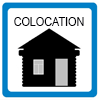
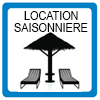

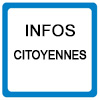

associations, postez vos actualités

participez au courrier des lecteurs
La Guyane c’est ici
La qualité de l’Air avec
ATMO
Photothèque

Lancements 2022
Vol 259 Ariane 5



